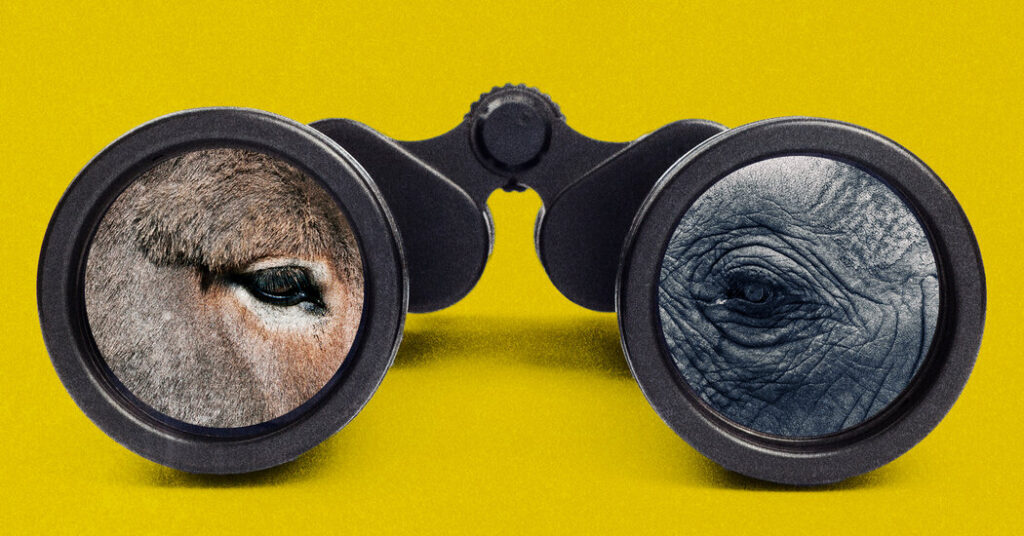[ad_1]
What was most startling about Tucker Carlson’s recent trip to Russia wasn’t his obsequious interview with Vladimir Putin but his gushing days afterward over how wonderful a place Moscow is. But then again, he was a special guest of the country that invented Potemkin villages (even if the original story is dubious), and making sure he saw only good stuff must have been easy.
Imagine, for example, that you brought people to New York and made sure that all they saw was the Upper East Side near the Metropolitan Museum of Art. They’d come away with the impression that New York is a very clean, spiffy-looking city.
The truth is that while parts of Moscow offer a small elite an opulent lifestyle, Russia as a whole is more than a bit ramshackle. Around a fifth of homes don’t even have indoor toilets. For many Russians, life is poor, nasty, brutish and short: Life expectancy is substantially lower than in the United States, even though America’s life expectancy has fallen and lags that of other advanced countries.
Anyway, while praising Moscow, Carlson trashed American cities, especially New York, where, he said, “you can’t use your subway” because “it’s too dangerous.” No doubt, there are some New Yorkers afraid to take the subway. Somehow, however, there were around 1.7 billion riders each year before the pandemic — yes, I take the subway all the time — and ridership, though still depressed by the rise of working from home, has been recovering rapidly.
It’s possible, of course, that Carlson has never ridden the New York subway, or at least not since the days when New York had about six times as many homicides each year as it does nowadays. In this he might be like Donald Trump, who probably hasn’t flown commercial in decades, declaring the other day that America’s airports — which have annoyingly long lines at security but have far more amenities than they used to — make us look like a “third world nation.”
Oh, and while New York’s subway stations don’t have chandeliers like Moscow’s and sometimes do have rats, the system does its job and, as I’ve written, plays a hugely positive role in the life of the city.
But right-wingers seem immovable in their conviction that New York is an urban hellscape — only 22 percent of Republicans consider it a safe place to live in or visit — despite the fact that it’s one of the safest cities in America.
More generally, there’s a striking disconnect between Americans’ perceptions about crime where they live — relatively few, from either party, consider it a serious problem — and their much more pessimistic assessment of the nation as a whole. This disconnect exists for both parties but is much wider for Republicans:
This is part of a broader phenomenon. America has become a country in which, for many people, especially but not only on the political right, believing is seeing. Perceptions on issues from immigration to crime to the state of the economy are driven by political positions rather than the other way around.
To take a subject I’ve obviously spent a lot of time on: During the Biden years, most measures of consumer sentiment have been much lower than you might have expected, given standard measures of the economy’s performance. This is still true, even though sentiment has risen substantially over the past few months. There’s practically a whole genre of analysis devoted to arguing that people are actually right to feel bad about the economy because of something or other.
So here’s a pro tip: Ignore anyone who says that Americans are down on the economy without noting that the reality is that Republicans are down on the economy.
I wrote about this last week, but let me make the point again using slightly different data and graphics. The widely cited Michigan survey of consumers provides data on sentiment broken down by partisan affiliation, although it has been a regular monthly feature only since 2017. I prefer to focus on the current economic conditions index, since people might legitimately have different expectations, depending on who’s in charge. So here’s what this index looks like, using three-month moving averages to cancel some of the statistical noise:
Democrats appear to feel that the economy now is about as good as it was in late 2019, which is what you might expect, given that the unemployment rate is about the same and inflation only slightly higher. Republicans, however, have gone from euphoria about the economy under Donald Trump to a very jaundiced view under President Biden.
What about independents? Never mind: For the most part, they lean toward one party or the other and behave like partisans.
Now, this comparison doesn’t prove that negative perceptions of the economy are all about partisanship — maybe things really are somewhat bad and Democratic partisanship is holding the numbers up — although Democrats don’t seem to experience the kind of mood swings when the White House changes hands that Republicans do. But at the very least, any discussion of economic sentiment that doesn’t take partisanship into account is missing a key part of the story.
As I wrote last week, the believing-is-seeing nature of public opinion may mean that perceptions of the economy, and perhaps crime, won’t matter very much for this year’s election: Americans who believe that things are terrible probably wouldn’t have voted Democratic, no matter what. But to take a longer view: How are we going to function as a country when large numbers of people just see a different reality from the rest of us?
Quick Hits
Dictators lie about their economies.
News reporting on the economy has become more negative.
Who believes in the great-replacement theory?
By a wide margin, Trump voters say that 2023 was OK or better for them personally but bad or terrible for the country.
[ad_2]
Source link

